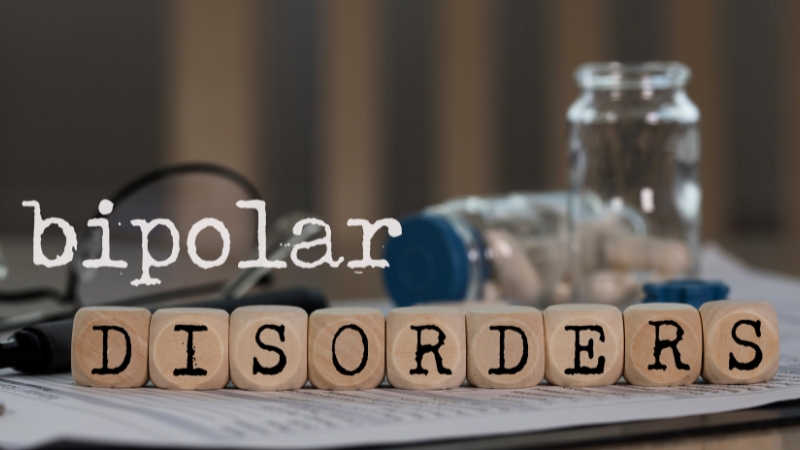Mental health is a very elaborate and nuanced subject. While depression and anxiety are commonly identified and diagnosed, Bipolar disorder is a bit difficult to be noticed by a layperson, and requires specialized knowledge and expertise to diagnose too.
On the other hand, the said disorder makes the patient’s life very challenging, and managing symptoms of Bipolar while navigating basic, regular life can become a battle. Although with the right medical help, taking medication and talk therapy, patients can manage those swings and still live lives with proper navigation.
What is Bipolar Disorder?
The thing that really highlights bipolar disorder is these major mood changes. We’re talking about going from feeling incredibly up and energetic or irritable to feeling really down and hopeless. The disorder was known as manic depression previously, owing to how its name suggests the symptoms directly. Here, emotional highs are known as mania and hypomania, where Hypomania is less extreme than mania; and low moods or emotional lows are identified as depression.
Depression brings a severe lack of interest in any activity, a low mood, too much sleep or too little sleep, along with feelings of sadness or hopelessness. At the same time, Mania causes an unreasonable amount of excitement and happiness, almost to the point of euphoria, or persistent irritability with a consistent burst of energy. It also causes the patient to require a very small amount of sleep, causing more harm to the brain function. The treatment of bipolar disorder includes mood-stabilizing medication, talk therapy, and in some cases, antipsychotic medications.
There are mainly three types of Bipolar disorders; apart from these three types, there can be other patterns. Bipolar I disorder, Bipolar II disorder, and Cyclothymia. Understanding the different types is likely to lead you to accurate treatment.
If you or someone you know is struggling, reaching out is the first step to healing
Bipolar I disorder
Here, one might notice intense manic episodes — the kind where someone may even require hospitalization due to risky behavior, delusions, or severe agitation. These extreme highs are often followed by deep, debilitating depressive episodes that can make everyday functioning feel nearly impossible.
A well-known Canadian case is that of Margaret Trudeau, former wife of Prime Minister Pierre Trudeau, who has publicly shared her experience living with bipolar disorder. Her struggles with mania, including impulsive travel and spending sprees, followed by severe depressive episodes, brought national attention to the realities of this condition and helped reduce stigma around mental illness in Canada.
In extreme cases, the patient is going through a manic episode and might lose a sense of reality, where he or she might engage in risky behavior, making massive, often thoughtless decisions, and sometimes engaging in dangerous sexual behavior. Without getting sleep, the person can go on with an impulsive behavioral pattern. Here, a manic episode can consist of grandiosity, thoughts, an uncannily elevated mood, and increased activity. This can cause disturbance in personal and professional life.
Bipolar II disorder
While hypomania is less severe than mania, it is worrying enough, as it indicates Bipolar II disorder. After that, often follows a really intense depressive episode, where just getting out of bed can feel impossible. Patients are likely to feel worthless, exhausted, and just unable to function.
Major depressive episodes can bear more extreme symptoms like suicidal thoughts, self-harm, or actions that lead to suicide. For many with Bipolar II, depression is the more dominant and challenging part. The hypomanic episode leads to a heavy crash afterwards, turning towards a deep depressive episode. The depressive episode can last for weeks or months.
Cyclothymia
Cyclothymia is quite tricky to diagnose, which decreases the chances of treatment for bipolar disorder. Here, multiple hypomanic and depressive symptoms occur over the course of two years. These can be milder than Bipolar I or Bipolar II, yet they happen pretty frequently. They can be really disruptive and make daily life feel unpredictable and difficult.
Bipolar disorder is a spectrum, and everyone’s experience is a little different. But whether it’s the really high highs of Bipolar I, the less intense but still significant hypomania of Bipolar II, or the ongoing ups and downs of cyclothymia, understanding these differences is the first step towards getting the right support and treatment for bipolar.
With a well-crafted treatment plan, support system, and self-awareness, people living with any form of bipolar disorder can build a balanced and meaningful life. Many individuals successfully manage their symptoms through a combination of medication, therapy, lifestyle changes, and ongoing support.
Conclusion:
Bipolar disorder can be overwhelming, but it is not insurmountable. Early diagnosis, consistent care, and a compassionate environment play a crucial role in long-term wellness. Everyone’s journey is different, but hope and stability are always within reach.
Actions to Take:
- Seek professional help: Consult a mental health provider near you for an accurate diagnosis and personalized treatment plan.
- Build a support network: Stay connected with family, friends, or support groups who understand your experience.
- Stick to a routine: Prioritize sleep, exercise, and regular meals to help stabilize mood.
- Monitor your moods: Use a journal or mood tracking app to identify patterns and triggers.
- Stay informed: Educate yourself and your loved ones about bipolar disorder to reduce stigma and increase support.
References
Mood Disorders Society of Canada: Bipolar Disorder in CanadaInternational Bipolar Foundation
Collaborative RESearch Team to study psychosocial issues in Bipolar Disorder (CREST.BD): CREST.BD Wikipedia Page

